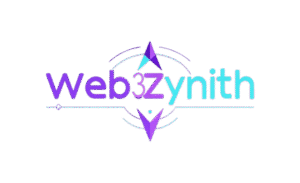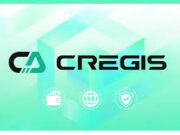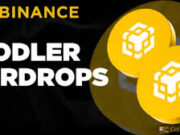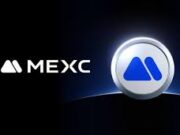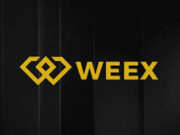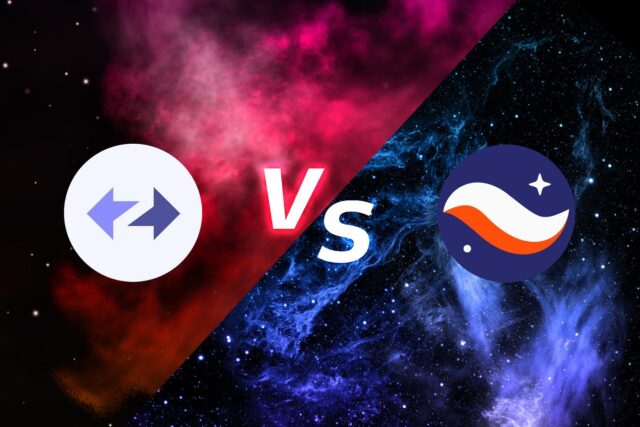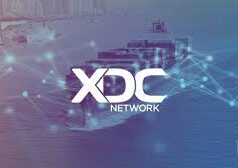Zero-knowledge (ZK) rollups are the sharp edge of Ethereum scaling. Among them, StarkNet and zkSync are the headline acts—both settling to Ethereum, both compressing transactions with validity proofs, and both sprinting toward cheaper, faster, safer blockspace. Yet they differ in cryptography, developer experience, and go-to-market strategy. Let’s unpack what matters for builders and users.
TL;DR
- StarkNet bets on STARK proofs (transparent, post-quantum friendly), a purpose-built language (Cairo), and a roadmap that prizes protocol-level innovation and decentralization. (StarkNet)
- zkSync prioritizes EVM compatibility and a modular stack (ZK Stack), and in 2025 announced EVM bytecode compatibility on zkSync Era—a big deal for Solidity teams that want a near drop-in experience. (zksync.mirror.xyz, Alchemy)
The Cryptography Bet: STARKs vs. SNARKs
- StarkNet uses ZK-STARKs: no trusted setup, transparent security assumptions, and believed to be post-quantum resistant. Proofs are larger, but proving is highly parallelizable and fast with scale. This design has guided StarkNet’s architecture since day one. (StarkNet)
- zkSync uses SNARKs (Plonkish lineage) with succinct proofs that are cheap to verify on L1. Historically, zkSync Era pursued “type-4 zkEVM” (language-level equivalence), but 2025 brought a headline shift: EVM bytecode compatibility is live, allowing unmodified bytecode to run—shrinking the gap with “type-1/2” targets in practice. (Ronin Docs, zksync.mirror.xyz, Vitalik)
Why you care: STARKs offer transparency and long-horizon security; SNARKs offer tiny proofs and fast L1 verification. Both are excellent; your choice is more about tooling and ecosystem than raw cryptography at this point.
Developer Experience: Cairo vs. Solidity (and the 2025 Twist)
StarkNet’s Cairo-First World
- Contracts are written in Cairo (now Cairo 1.0), compiled via Sierra (a safe, intermediate layer that guarantees provability of success/failure). The toolchain has steadily improved to feel more like modern Rust-style development. (StarkNet)
- If you’re a Solidity dev, you can transpile via projects like Warp or use EVM-on-StarkNet initiatives, but the “native” path is Cairo. The reward is access to features StarkNet can expose first, because it controls the language and VM. (StarkNet)
zkSync’s EVM-Native On-Ramp
- Historically language-level compatibility (Solidity → zkSync VM) meant most tools worked, but not bytecode-for-bytecode. In April 2025, zkSync announced EVM bytecode compatibility, enabling unmodified EVM bytecode—a meaningful step toward “it just works” for Foundry/Hardhat shops and bytecode-deployed systems. (zksync.mirror.xyz)
- zkSync also promotes ZK Stack, a modular framework for spinning up custom L2/L3s that inherit the prover and tooling—positioning zkSync Era as both a destination chain and a platform for many chains. (Alchemy)
Bottom line: If you’re starting fresh and like learning new primitives to squeeze ZK performance, Cairo/StarkNet is compelling. If you want to reuse bytecode, audits, and EVM infra with minimal friction, zkSync’s 2025 compatibility is a major draw. (zksync.mirror.xyz)
Architecture & Data Availability: Rollup Economics in 2025
- Both projects are validity rollups posting data to Ethereum (and increasingly using blobs via EIP-4844 to slash costs). zkSync Era was among the early adopters of blobs for state data, pushing L1 costs per gas down meaningfully (paper estimates mention 0.025 gwei per gas used by Era’s blob posting). (caaw.io)
- On-chain cost efficiency (what L2s pay to Ethereum) provides a proxy for how efficiently each compresses state updates. L2BEAT’s Onchain Costs dashboard tracks these trends and shows both StarkNet and zkSync among the cheaper rollups per basic operation today. (Remember these are L2 costs, not end-user fees.) (L2BEAT)
Decentralization & Operators: Who Runs the Show?
- StarkNet has published a 2025 decentralization roadmap that covers sequencer evolution and governance. The team’s long-standing stance is to open up operators and decentralize the prover/sequencer stack progressively, with explicit milestones. (StarkNet)
- zkSync Era currently has L1 queueing for censorship resistance, but L2BEAT’s risk analysis notes users cannot force inclusion directly (the sequencer can halt for everyone). zkSync has been iterating on decentralization and operator design, but the queue limitation is a present nuance. (L2BEAT)
Reality check: many L2s remain on a path toward fuller decentralization. StarkNet’s public milestones help you track progress; zkSync’s operator model is evolving, with a candid risk profile documented by third parties. (StarkNet, L2BEAT)
Real-World Performance: Throughput, Batching, Fees
- Batching strategy differs: Nethermind’s 2024 analysis observed StarkNet runs much larger (and more variable) batch sizes—sometimes >50k operations—pushing prover limits for efficiency; zkSync Era used smaller fixed caps (e.g., ~750–1000 tx per batch). This speaks to distinct proof-system engineering, not user-visible UX per se. (nethermind.io)
- End-user fees fluctuate with blob prices and L2 load, but on the margin, both StarkNet and zkSync often undercut Optimistic rollups for simple transfers and swaps. L2BEAT’s cost trackers give a comparable view across operations (transfer, swap, NFT mint). (L2BEAT)
Security Model & Proofs: What Happens When Things Break?
- Both inherit Ethereum security for settlement and use fraud-resistant validity proofs at L1. The key difference is proof system and VM.
- StarkNet: Cairo VM + STARKs means audits and formal methods are targeting Cairo code; the Cairo toolchain (Sierra) adds provability guarantees on failures and upgrades, reducing foot-guns at the VM boundary. (StarkNet)
- zkSync: With bytecode compatibility, existing EVM audits and tooling carry over more directly, potentially reducing migration risk for large codebases. The pay-off: easier reuse of existing testing pipelines and monitors. (zksync.mirror.xyz)
Ecosystem & Adoption: Where Are Builders Going?
- Data aggregators (e.g., L2BEAT) consistently track TVL and risk posture across L2s; both StarkNet and zkSync appear in the top cohort of ZK rollups, with Era frequently leading the ZK segment by TVL thanks to a wider consumer-app footprint and the ZK Stack flywheel. (L2BEAT, Alchemy)
- Industry commentary and rankings throughout 2025 keep both chains in the “top 10 L2s” mix, reflecting steady developer mindshare. (Medium, Our Crypto Talk)
Notable:
- zkSync’s bytecode compatibility + ZK Stack has catalyzed more “appchain” experiments that want ZK proofs without abandoning EVM bytecode. (zksync.mirror.xyz, Alchemy)
- StarkNet’s Cairo-native ecosystem (DeFi, gaming, account-abstraction wallets) benefits from features baked deep in the stack and a strong commitment to protocol-level R&D. (StarkNet)
Side-by-Side: At a Glance
| Dimension | StarkNet | zkSync Era |
|---|---|---|
| Proof system | ZK-STARKs (transparent, no trusted setup) | SNARKs (succinct, widely used) |
| VM / Language | Cairo (+ Sierra); Cairo-native devX | EVM (2025: bytecode compatible) |
| Dev on-ramp | Learn Cairo; transpilers exist | Solidity/Foundry/Hardhat “just work” |
| Decentralization | Public 2025 roadmap for sequencer/governance | Operator model evolving; L1 queue exists but cannot force inclusion |
| Batching | Larger, variable batches to prover resource limits | Historically smaller batch caps |
| Costs (L2→L1) | Competitive with blobs; low per-op | Early blob adopter; very low per-gas costs |
| Platform strategy | Single L2 focus + ecosystem R&D | ZK Stack for many L2/L3s |
Citations: decentralization (StarkNet roadmap), zkSync L1 queue risk, batch analysis (Nethermind), bytecode compatibility (zkSync blog), L2 costs (L2BEAT). (StarkNet, L2BEAT, nethermind.io, zksync.mirror.xyz)
What Will Decide the Winner?
1) Developer Gravity
zkSync’s bytecode compatibility is a watershed for EVM shops. If your org carries years of Solidity code, audits, and runbooks, reducing porting friction matters more than a theoretical proof advantage. Conversely, teams optimizing for ZK-native performance (and open to new paradigms) may find Cairo worth the switch. (zksync.mirror.xyz, StarkNet)
2) Decentralization Milestones
Both projects must complete the awkward adolescence from “managed operators” to credible neutrality. StarkNet’s explicit 2025 milestones provide clarity; zkSync’s openness about queue semantics and ongoing iteration will be watched closely by security-minded users. (StarkNet, L2BEAT)
3) Cost & Throughput Under Load
Blob pricing and prover engineering will continue to separate leaders. StarkNet’s bigger batch philosophy could shine in peak periods; zkSync’s succinct proofs and early blob usage already make fees impressively low. Keep an eye on L2BEAT Onchain Costs as a neutral scoreboard. (nethermind.io, caaw.io, L2BEAT)
4) Ecosystem Flywheels
zkSync’s ZK Stack enables a network of chains that share proving infrastructure and tooling—each new chain can amplify Era’s gravity. StarkNet’s language control (Cairo/Sierra) can deliver features that trickle down to apps faster. Both flywheels are powerful; they’re just different. (Alchemy, StarkNet)
Verdict: It’s a Two-Horse Race—for Different Audiences
- If you’re EVM-native and speed-to-market matters, zkSync Era now offers one of the smoothest ZK paths: deploy bytecode, keep your Solidity toolchain, and tap into the ZK Stack. That combination is hard to beat for mainstream devs and appchain experiments. (zksync.mirror.xyz, Alchemy)
- If you want ZK-first performance and long-horizon security properties, StarkNet is a superb bet. Cairo gives the network room to innovate at the protocol level, and the public decentralization plan makes its trade-offs legible to enterprises and DeFi blue chips. (StarkNet)
In practice, both can win—just in different ways. zkSync may dominate EVM-continuity and appchain narratives; StarkNet could lead ZK-native expressiveness and research-grade robustness. The real winner is the builder who picks the stack aligned with their risk, roadmap, and team skills.
Sources
- StarkNet decentralization & roadmap: StarkNet blog/roadmap. (StarkNet)
- Cairo/Sierra & dev tooling improvements: StarkNet docs/blog. (StarkNet)
- zkSync EVM bytecode compatibility (2025): zkSync official post. (zksync.mirror.xyz)
- ZK Stack & adoption: Alchemy RaaS piece. (Alchemy)
- Risk/ops profiles (L2BEAT pages): zkSync Era, StarkNet, Onchain Costs. (L2BEAT)
- Batching behavior comparison: Nethermind analysis (2024). (nethermind.io)
- ZK-EVM taxonomy: Vitalik’s canonical primer. (Vitalik)
- Blobs & fees on zkSync Era: CAAW 2025 paper. (caaw.io)
- Landscape snapshots & rankings: L2BEAT overview; industry roundups (2025). (L2BEAT, Medium, Our Crypto Talk)
